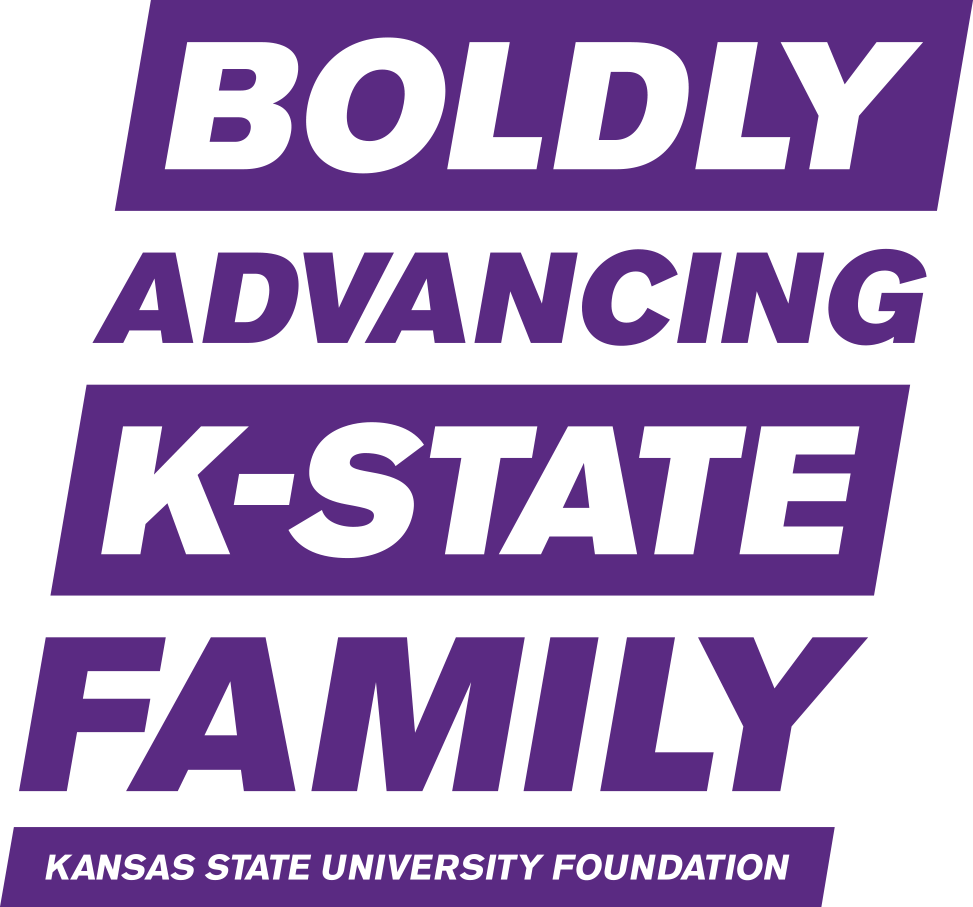The subscription economy, defined by the explosive growth of subscription-based companies like Netflix, Spotify, HelloFresh, and Dollar Shave Club has changed the way we interact with businesses. As consumers, we expect a custom, personalized experience everywhere we turn.
This evolution holds huge implications for fundraising and donor expectations. While this subscription-driven industry has grown 200% annually, giving rates have dropped 33% in the past 15 years alone. It’s time for advancement to bring this personalized approach to donor relationships. Institutions like Oregon State University and Kansas State University are doing just that, with the goal of reducing donor decline.
Last year, K-State hired its first Digital Development Officers with the goal of improving relationships with donors at the middle and bottom of their giving pyramid. These new DDOs are tasked with connecting with thousands of potential donors using customized, one-to-one outreach. They tap into social insights and donors’ digital footprints to personalize outreach, connect with alumni, and refer the best prospects to leadership giving and major gifts teams.
By using Digital Development Officers, K-State is delivering a personal touch with every constituent engagement, reaching more high-potential prospects, and passing more leads to major gifts than ever before (60 in FY19 to be exact!).
Here’s how they’re using this approach to solicit new five, six, and seven-figure gifts for K-State:
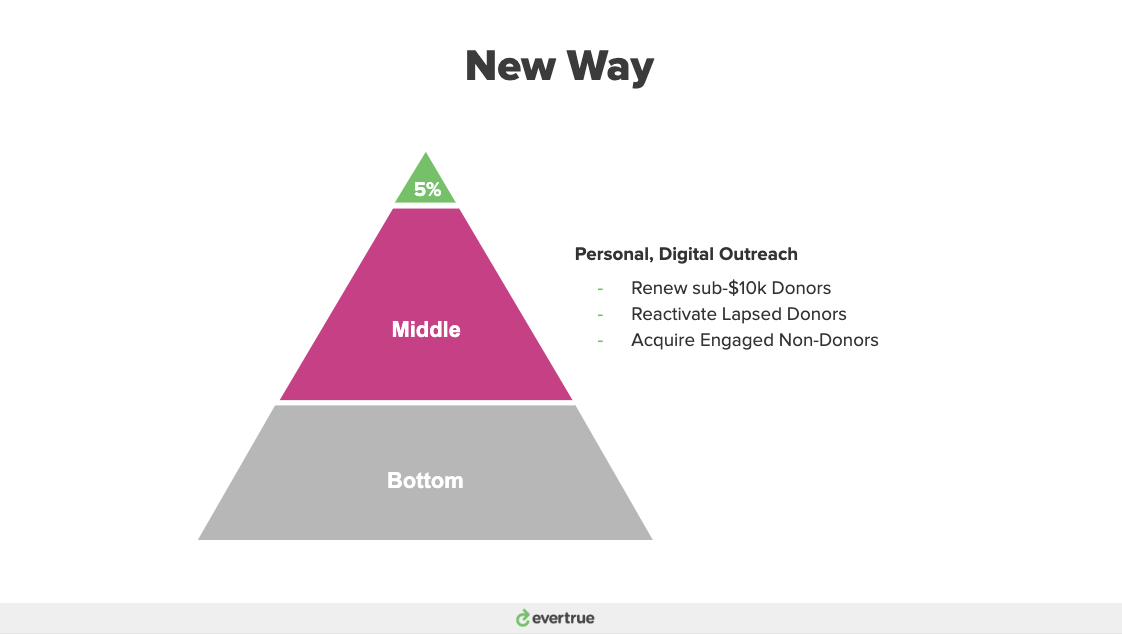
1. Personalized communication at scale.
Those two phrases sound pretty incompatible, we know. But hear us out.
It’s 2020. There are more tools to communicate with your donors than ever before. When DDOs are based at the university and not traveling to meet with donors or alumni, they have ample time to be connecting with constituents in the digital sphere.
Using tools like EverTrue, ThankView, Hustle, Emma, Zoom, and Yesware, coupled with Facebook, Linkedin, and Twitter, DDOs have the ability to be in contact with hundreds of constituents in a single week. At K-State, DDOs made 6,000 constituent contacts in FY19, meaning 32% of all donors had some type of contact from a DDO.
All of this technology may seem overwhelming at first, but it actually represents a huge opportunity for the advancement sector as a whole. Think about the personalized communication you get from your favorite brands (Spotify, Netflix, JetBlue, et cetera), even though you might not be a “major-gift-level” customer for them. We have the opportunity to steward the next generation of major-donors using this new technology to personalize our outreach and communications. More than that, we have the opportunity to create an amazing donor experience for any person that gives to our university.
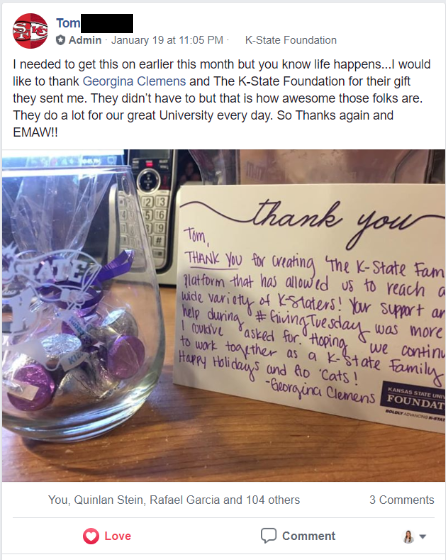
2. Relationships matter.
One of the key benefits of a DDO program is being able to form relationships with large amounts of donors in the middle of your giving pyramid. As a company whose mission is to “build relationships in pursuit of a better world,” this is music to our ears. DDOs provide much-needed and much-appreciated touchpoints with valued alumni, mid-level donors, and the leadership-gift-givers of tomorrow at a scale that has not been seen in advancement before now.
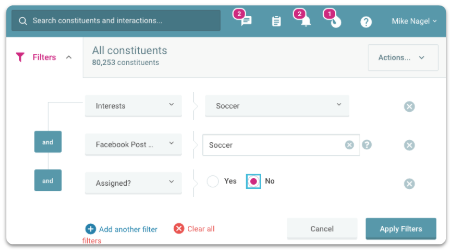
At K-State, DDOs read all notes from student callers to make sure they are following up with alumni and donors when appropriate. They use TrueView insights to discover constituents that are engaged about a specific topic and build solicitation lists using this knowledge. And they use an omnichannel approach to supplement mass solicitations for a select few (read: 100-150) constituents at a time.
All of these efforts result in a donor-centric experience and an increased affinity to the university.
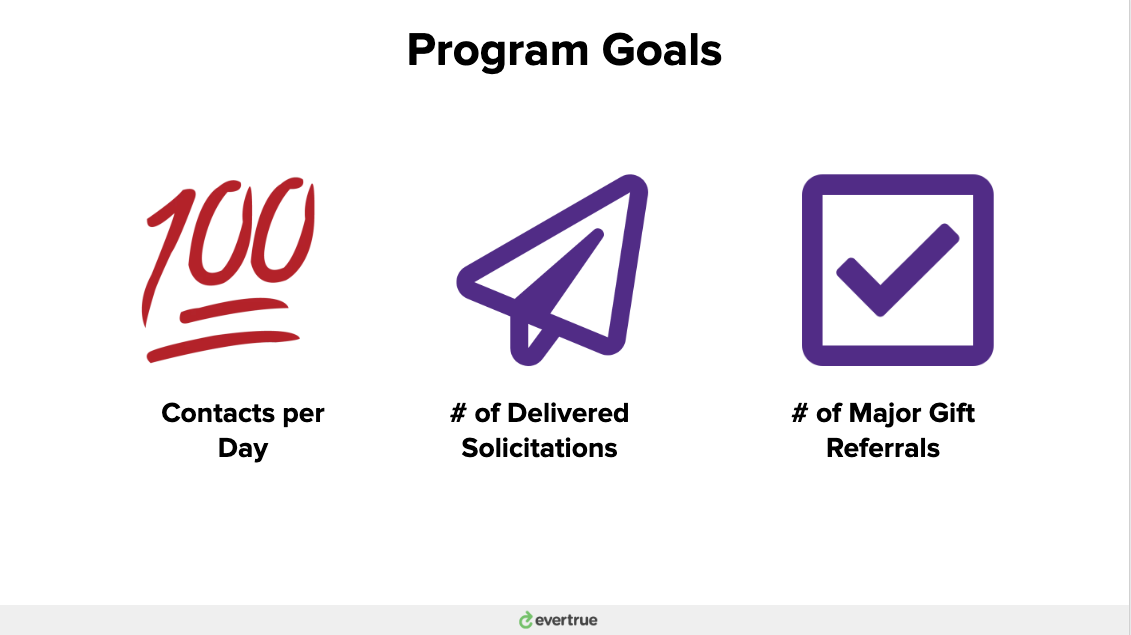
3. Set clear goals.
When starting any new program, it’s important to set clear and measurable goals. (Did anyone else just have a flashback to learning about S.M.A.R.T. goals in school? Well, there’s a reason we learned it.) Goals should be specific, measurable, achievable, relevant, and time-bound to be the most effective. How else can we measure real progress?
The K-State team set the number of contacts each day that a Digital Development Officer should have with constituents. They also set annual goals for the number of delivered solicitations and a number of major gift referrals for the DDO team. The team had nine thousand prospects that needed to be qualified or disqualified, and their goals were set to keep them on pace for this milestone.
Interested in learning more? Check out our Digital Gift Officer Playbook here. Or chat with us to see how EverTrue can help get a DXO program off the ground at your institution.
